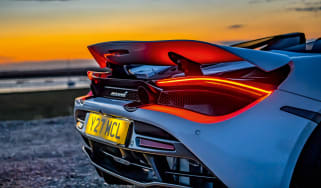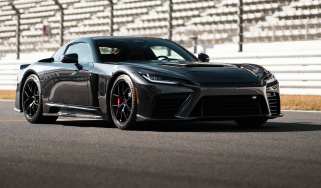Volkswagen Golf R review – engine, gearbox and technical highlights
EA888 engine and DSG are a potent combo, making for an effective, if clinical powertrain
Three-doors and manuals died with the arrival of the Mk8 and there’s no change on that front for the latest Mk8.5 facelift. The 2-litre EA888 four-cylinder turbo has been uprated to Golf R 20 Years-matching specs, with 328bhp, while the 310lb ft torque figure remains.
The twin-clutch DSG transmission features seven gears, and its near instantaneous shifts contribute to effortless performance, even if the turbocharger and transmission feel like they need longer to wake up than they once did – something that could well be due to the gas particulate filter fitted to all Mk8 Golfs.
There’s software at play that further sharpens the transmission and augments a sort of anti-lag function, coming from the Golf R 20 Years, that’s now standard. The system keeps the turbo spinning through a partially opened throttle under heavy braking to reduce the spool time when you jump back on the accelerator.
Like the Mk8 GTI Clubsport, the R features a host of detail changes to its tried and tested layout of MacPherson front struts and a multi-link rear axle, with improved bearings and joints throughout and stiffer spring rates than on the old car. There are no chassis set-up differences between any of the three subvariants.
The standard dampers are passive, but VW’s adaptive units are an option (and a must-have in our view). The base car’s standard wheel size is once again 18 inches. The rears fed power via a torque vectoring rear differential that can send up to 100 per cent of drive to the outer rear wheel during cornering.
The R offers Comfort, Sport, Race and Individual driver modes, accessed via either a button on the dash or on the steering wheel. Special, where all the car’s systems are configured for the Nürburgring Nordschleife, and Drift, with obvious consequences, that were extras before, are now standard. The front brake discs are larger than those of the old seventh-generation model at 357mm, and gripped by lighter calipers.




